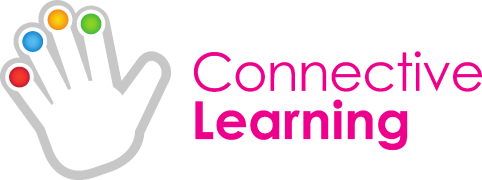How does this computerised method help people with dyslexia?
People with dyslexia often have an aberration in the way they see letters and words. An important feature of the Connective Learning method is that the screen and typeface colours can be set up to suit individual needs, which will help pupils to see the letters and words on the screen more clearly.
Another important feature is that students first learn to touch type. Each finger has a memory bank in the brain, that can be developed so that you do not have to think about or look where the finger has to go on the keyboard. Once the pupil can touch type, there is less for them to think about – it takes away the problems of having to think how they are meant to hold the pen, what the letter should look like, which way round it should go etc. The only thing they have to think about is how to spell the word.
Each exercise is first “read out” by the computer then read aloud by the student. Comprehension of the piece is fully discussed between student and tutor. The student then overtypes each word on the screen, saying each letter name as it is typed. In this way, they simultaneously hear the computer say the words, see them on screen, use touch and movement to type them and say (and hear) the sequence of letters for each word. Finally, they read the whole exercise and hear a recording of their own reading. This use of several of the senses and constant repetition helps the student to grow new connections in the brain. The student is led gently along and is never stressed. This reinforces and strengthens the connections until they become so strong that the student has lost the aberration they once had.
Once a student has caught up and is on a par with others of her/his age, will s/he need to keep coming?
No. By then the connections will have grown and s/he will be thinking the same way as others. Once they have grown the connections, students do not usually slip back.
How often will s/he need to come?
S/he will need to come for a one-hour lesson twice a week. Once a week is good, but twice a week is much the best for the student.
If a student has only one lesson per week, the gap between lessons is too long and some of the learning is lost. This is disheartening for the student and they never really get into the swing of things – they get off on the wrong footing. If cost is a problem, it is better to save up and take three months of lessons twice a week and see what progress is made, rather than to drag things out over a longer period coming only once a week. Twice a week really is a must for the student.
What qualifications do the tutors have?
Founder Isabel McIntyre holds the Hornsby Diploma in Specific Learning Difficulties (Dyslexia) and is an Associate Member of the Dyslexia Guild. Connective Learning tutors are not usually qualified teachers, but teaching is not involved – the students draw their learning from the computer. Dyslexic people cannot be taught in the conventional sense, but are very able to learn and absorb knowledge in a supportive situation, where they control the learning process themselves. Connective Learning tutors are trained in guiding students through the programme and facilitating learning, in a situation that is positive, non-threatening, interesting and rewarding – providing support and guidance, when needed, on a personal level.
What assessments do you carry out?
The Connective Learning course is preceded with an initial reading and spelling screening, using well-known standardised reading and spelling tests that are often used in schools. Coloured overlays are also tried, to see whether or not they help the student to see text more clearly. This screening is mainly for the purposes of the Connective Learning programme and helps in tailoring the programme to each student’s needs, including determining an appropriate starting point in the programme.
If you have any further questions and/or would like to visit the Centre to see a demonstration of the programme, please use the contact details for the Centre on the Kelsall Connective Learning Dyslexia Centre website
